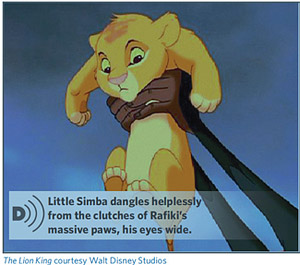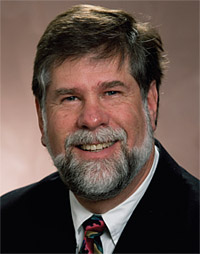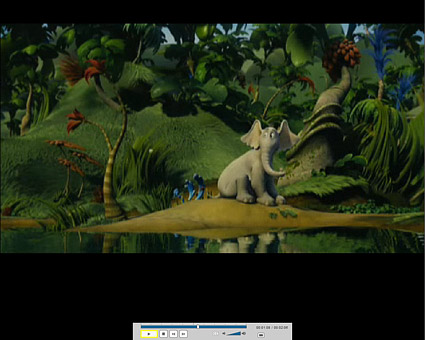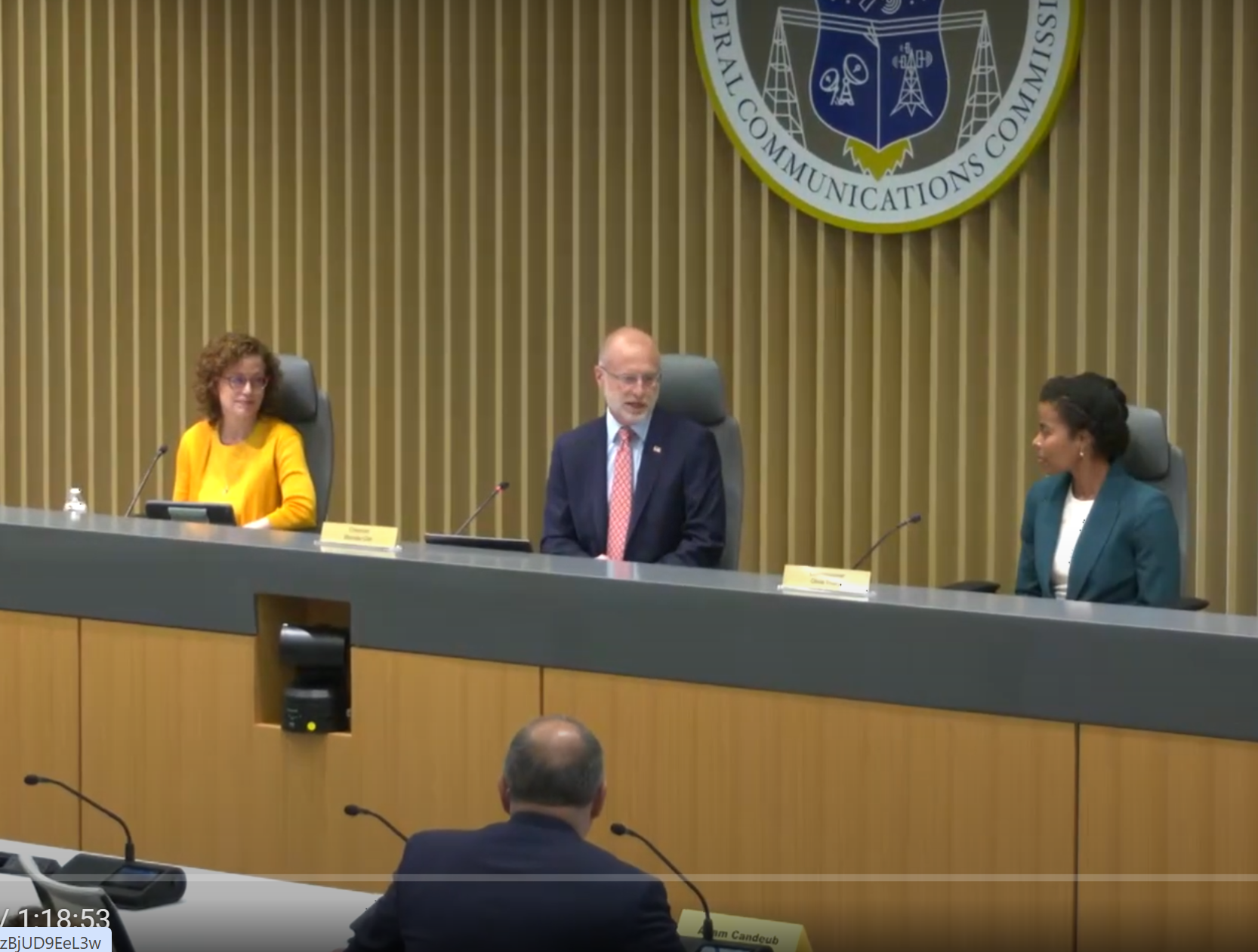FCC Reinstates VDS

WASHINGTON—An estimated 11 million blind and visually impaired consumers will soon begin envisioning TV programs a lot easier, thanks to the reinstatement of video description rules first adopted by the FCC more than a decade ago.
In a specialized service initially adopted for movie theater patrons—and later carried over for DVDs and Blu-ray discs—video description services (VDS) generally pertain to the insertion of audio-narrated descriptions of a program's key visual elements within the natural pauses of actor dialogue. In other words, it's literally reading between the lines.
By congressional mandate and with the blessing of the White House, the FCC's Report & Order of the Twenty-First Century Communications & Video Accessibility Act of 2010 (CVAA) reinstates rules first adopted in 2000. (A federal appeals court had vacated the original rules due to a question of "insufficient authority.") Full compliance must begin next July 1.
LARGE MARKETS

Video description services (VDS ) generally pertain to the insertion of audio-narrated descriptions of a program’s key visual elements within the natural pauses of actor dialogue. The rules primarily involve large-market affiliates of ABC, CBS, Fox and NBC networks, and the five most-viewed cable networks: Disney Channel, Nickelodeon, TBS, TNT and USA. (ESPN and Fox News Channel are exempt since most of their content is either live or produced within 24 hours of airtime.)
For affected broadcast affiliates—as well as cable, fiber and DBS systems with more than 50,000 subscribers—VDS responsibilities are generally limited to providing "pass-through." The nine TV networks are responsible for providing VDS (typically produced by outside vendors). The minimum required 50 hours of content per-calendar quarter can be primetime or kids fare, or a combination of both.
Public TV does not have mandatory minimum requirements, although PBS already voluntarily exceeds 50 hours per quarter. The reinstated rules also require all network-affiliated broadcasters (including PTV) in all-sized markets to pass-through any existing VDS that is provided with their programming—but only if they have the technical means to do so.
The returning rules are being welcomed by such diverse industry voices as NAB and the Consumers Electronics Association. Julie Kearney, CEA's vice president of Regulatory Affairs, said "closed captioning opened up the television experience for deaf and hard-of-hearing consumers, and we hope [VDS] will do the same for blind and low-vision people. CEA looks forward to working with broadcasters to maximize [VDS] in both legacy and future TV sets."
Paul Schomburg, senior manager of Government & Public Affairs at Panasonic Corp. of North America, said "we're now doing due diligence to test out receivers to make sure they will work correctly. One of the issues is getting the test material to reflect the newer upgrade Part 5 of the 2010 ATSC standard [AC-3 Audio] that's cited in the order. But overall, I'd be surprised if we heard problems on any of this from [manufacturers]," Schomburg said.

Larry Goldberg Jay Adrick, vice president for Broadcast Technology at Harris Broadcast describes VDS as an additional audio channel, and video encoding includes multiple audio channels. "So the ability to support descriptive video for [manufacturers] is merely turning on an additional audio channel within the HDSDI or SDI path. While the networks feed the content, the stations will have to encode and transmit it." Adrick also chairs a forum of the Open Media Video Coalition on ATSC Mobile DTV, where VDS might also be deployed down the road.
LABELING ISSUES
Larry Goldberg, director of the National Center for Accessible Media Policy, has been active in helping shape VDS rules for several years. NCAM is a sister organization of WGBH's Media Access Group in Boston, which has been a pioneer in creating access tools for disabled consumers. MAG is one of a handful of parties which provides VDS for public and commercial TV content, and its clients include "The Simpsons" on Fox and the "CSI" franchise on CBS. (Most VDS is currently provided by PBS and CBS.)
"We started out in the late '80's with stereo TV and then the SAP channel became available," Goldberg said. "We were doing captioning for the deaf [and] a lot of blind users told us they were watching loads of television but were missing a lot. Long-term, all parties seem to be lining up to make sure that programs will be tagged correctly so [VDS] can be readily located by the user."
A demonstration of video description from the National Center for Accessible Media. Tagging is an issue not yet fully resolved, according to Kelly Williams, NAB's senior director of Engineering & Technology Policy. "In ATSC, metadata labels the audio service type and language. The current standard defines three types of services: CM for 'complete main,' VI for 'visually impaired,' and HI for 'hearing impaired.' The FCC order requires broadcasters to adhere to a recent version of the standard that says to label the DVS audio track as 'VI,'" Williams said.
Typically, the main audio would be labeled "CM English" and a Hispanic track, for example, would be "CM Spanish"—while the most recent ATSC modification calls for that "VI" label for VDS. "Yet a broadcaster could go ahead and logically want to label the second audio channel as 'VI-English,' but there are virtually no TV receivers or set-top boxes out there right now that will recognize VI-English," said Williams.
NAB and other groups have discussed the labeling issue with the FCC, and consequently the Order does allow flexibility to tag a VDS track as the more recognizable "CM Spanish" for the foreseeable future (when there is no actual Spanish-language track being used). "The big takeaway here is that stations need to be communicating with their networks," Williams said.
Comcast, the nation's largest cable firm, which also recently took ownership of NBC, said it plans to be fully VDS-compliant by July 1, 2012. "While we don't anticipate significant changes in [cable] headend operations, now that we have the specific rules available we're working to ensure that necessary procedures are developed for local systems…" said Comcast spokeswoman Jenni Moyer. "We've approached these responsibilities as both a [multichannel video programming distributor] and a programmer… and we'll assess longer-term issues after we've had some experience with VDS."

The professional video industry's #1 source for news, trends and product and tech information. Sign up below.
